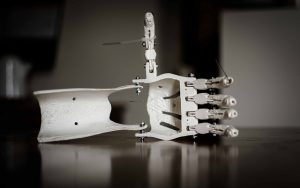
Manufacturing companies often use computer-aided design (CAD) files to design, as well as fabricate, products and components. After designing a model and saving it as a CAD file, a worker will upload it to a 3D printer. The 3D printer will then build the product or component using raw material. Rapid prototyping is one such manufacturing process that involves the use of a CAD file and a 3D printer. For a better understanding of rapid prototyping and the role it plays in manufacturing, keep reading.
What Is Rapid Prototyping?
Rapid prototyping is a group of 3D printing-related processes that involve the “rapid” fabrication of a product or a component — for prototype purposes — using a CAD file and a 3D printer. Before they can sell a product or component, manufacturing must test it. Testing generally consists of building a prototype, after which the manufacturing company can inspect and evaluate it for flaws. Rapid prototyping allows manufacturing to quickly fabricate prototypes using a 3D printer.
Rapid Prototyping vs 3D Printing: What’s the Difference?
Many people confuse rapid prototyping with 3D printing — and rightfully so. Both processes involve the use of a 3D printer to build an object from a digitally created model, which is typically saved as a CAD file. So, what’s the difference between rapid prototyping and 3D printing?
3D printing is an even broader term that covers all applications involving the use of a 3D printer. In comparison, rapid prototyping is a narrower term that only covers manufacturing applications where a 3D printer is used to quickly build a prototype.
Rapid prototyping specifically has two characteristics that distinguish it from other 3D printing processes:
- Used for prototypes: Rapid prototyping is designed specifically for use with prototypes, meaning consumers and hobbyists generally don’t use it.
- Emphasizes speed: In addition to being used with prototypes, rapid prototyping focuses on speed.
How Rapid Prototyping Works
Rapid prototyping works on the same principle as 3D printing. To build a prototype, manufacturing companies must first design the prototype using CAD software. Once saved as a CAD file, the digital model can be uploaded to the 3D printer, which will then build the object using raw material. There are many different types of 3D printers used in rapid prototyping. Some of them deposit material layer by layer, whereas others use a laser to activate and cure a special type of powder. Regardless, they all build objects using instructions directed in the CAD file.
Learn more about Monroe’s Additive Printing Service or get your parts printed now!
No tags for this post.
